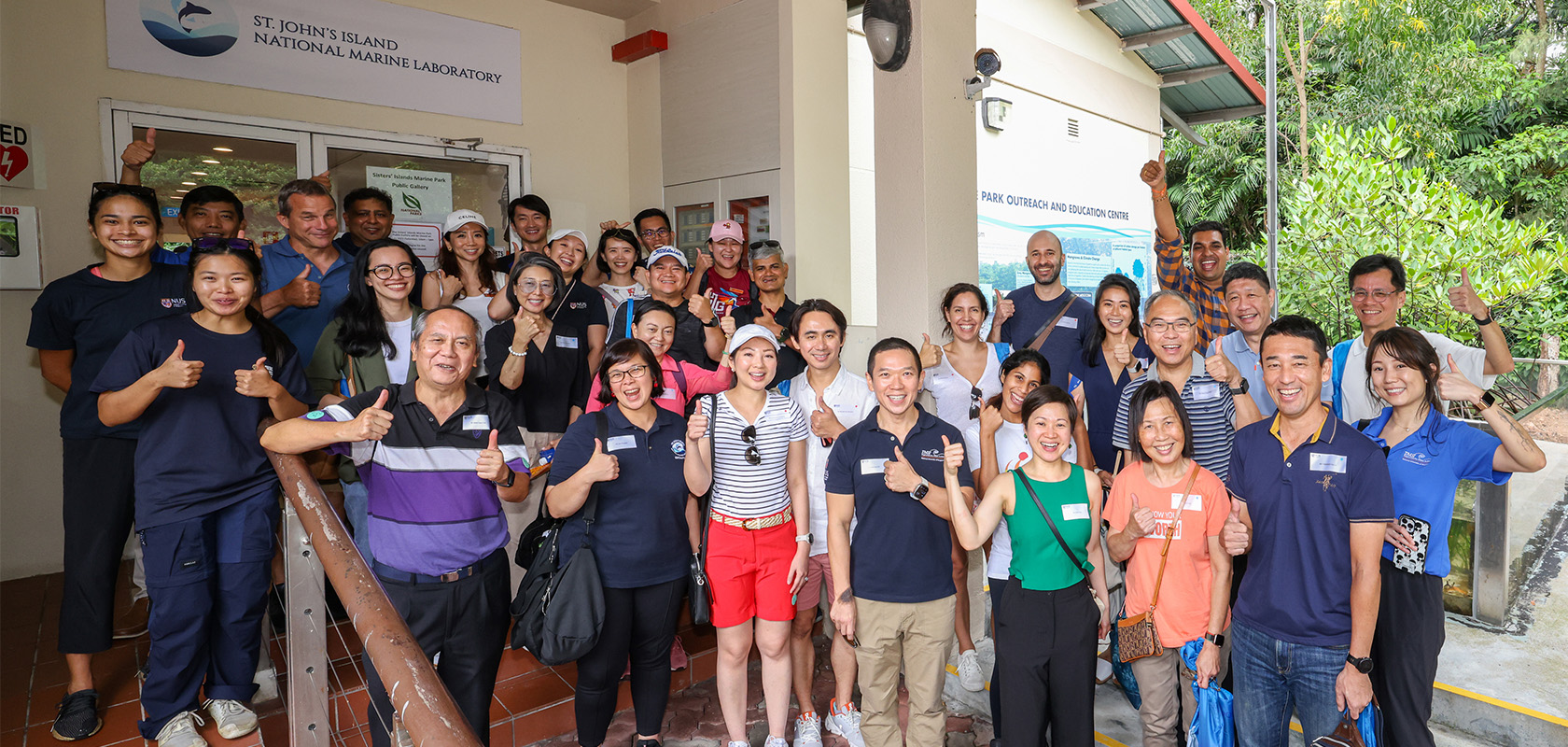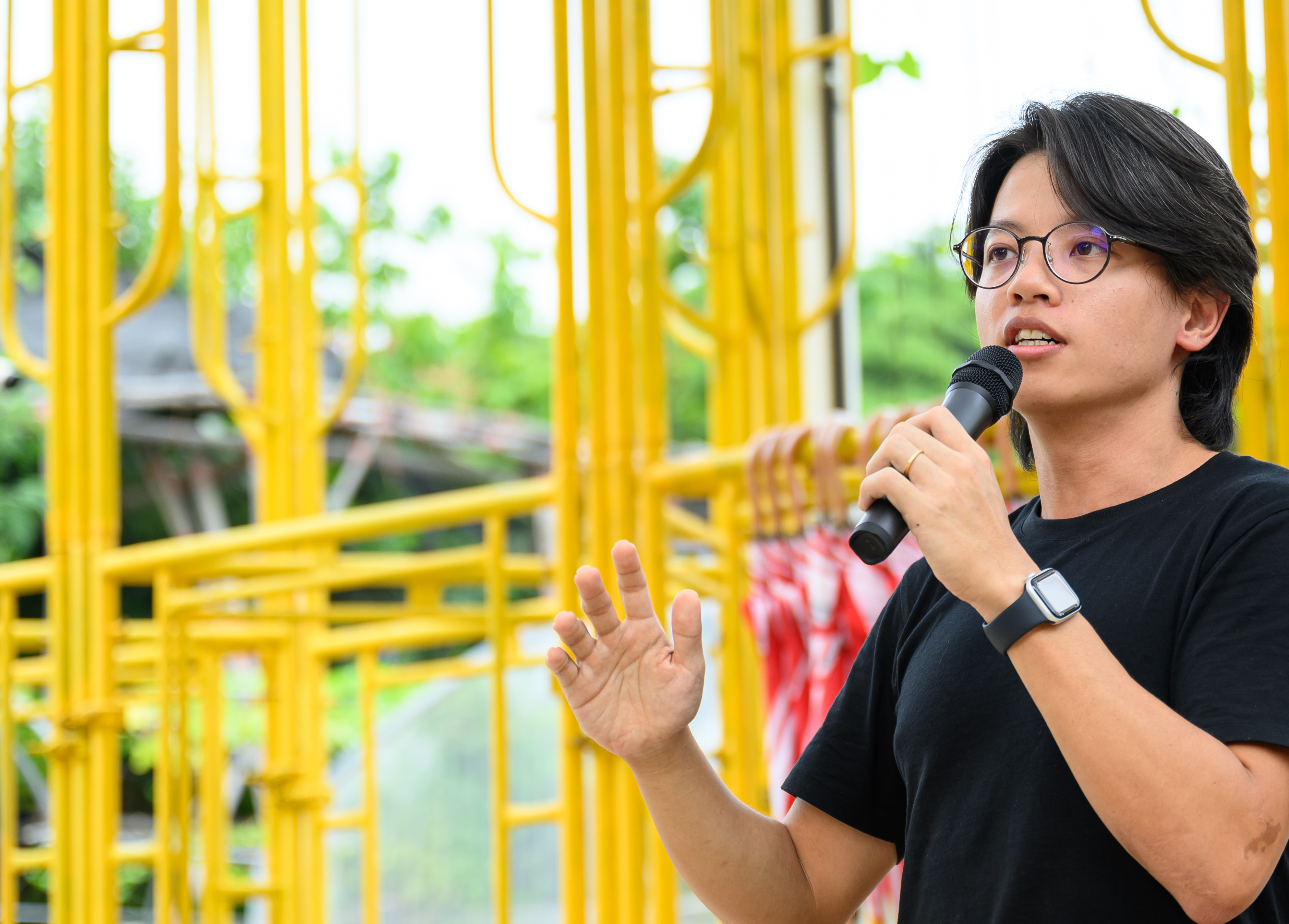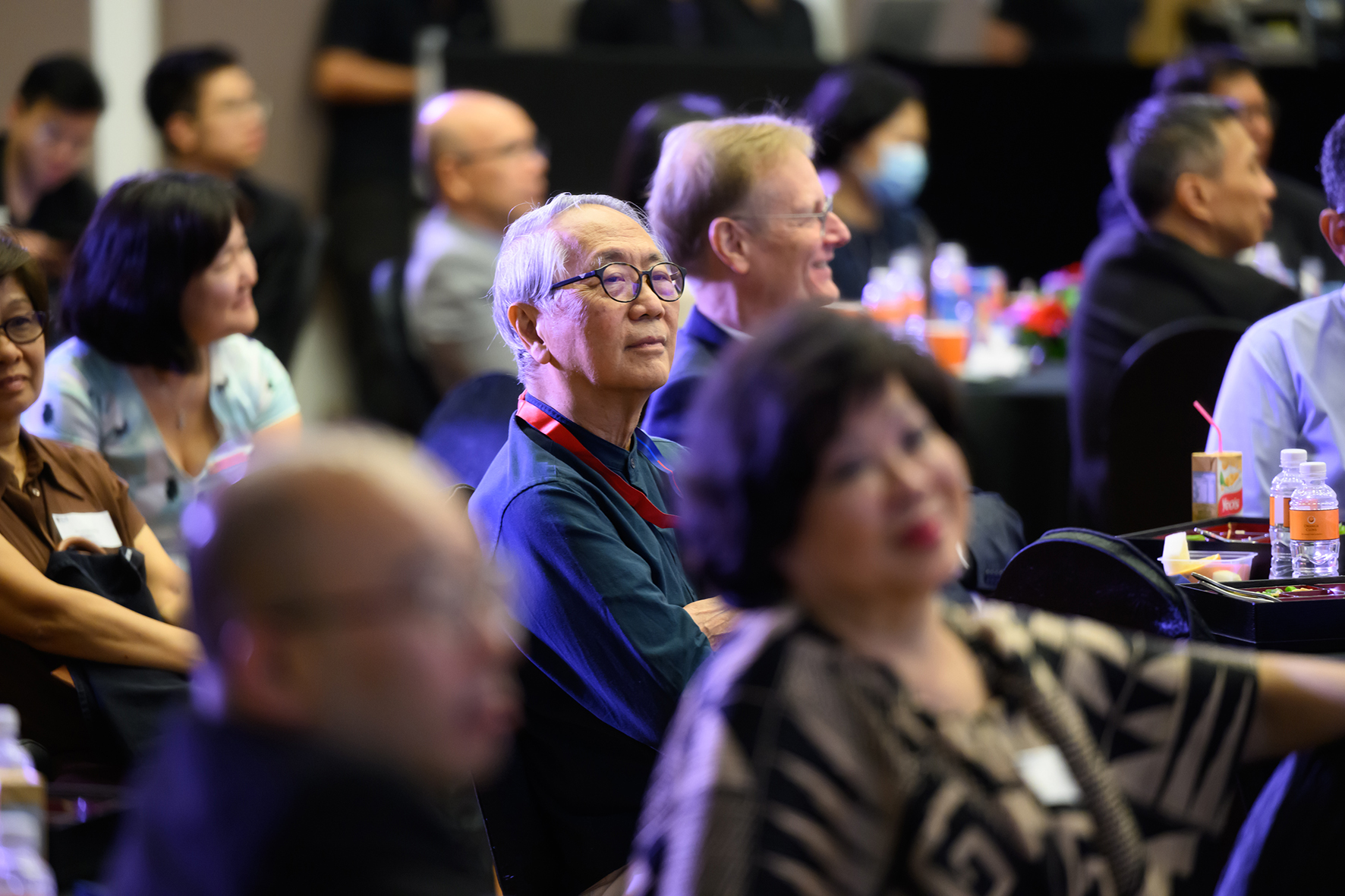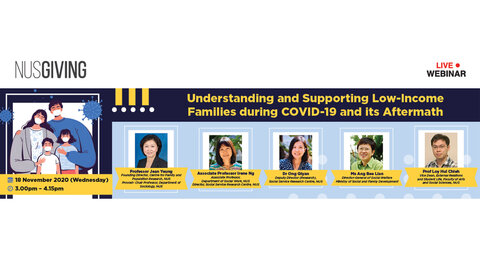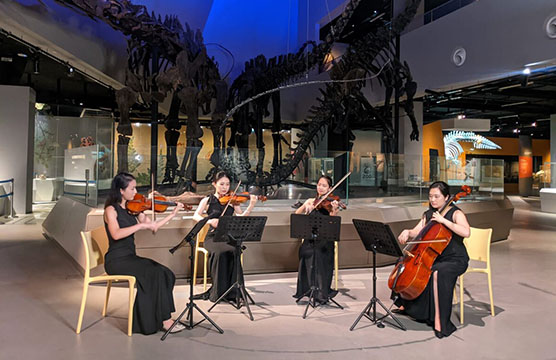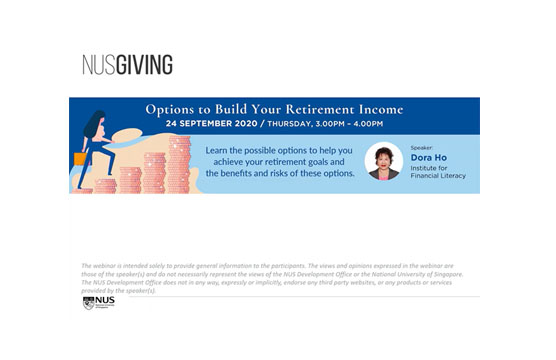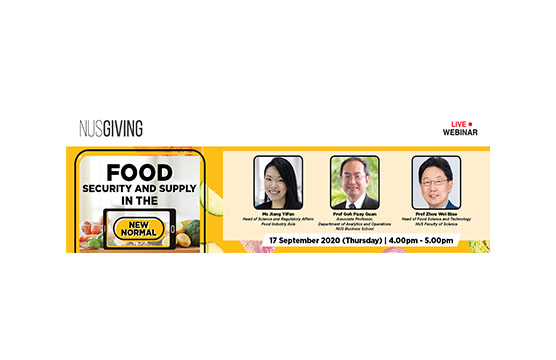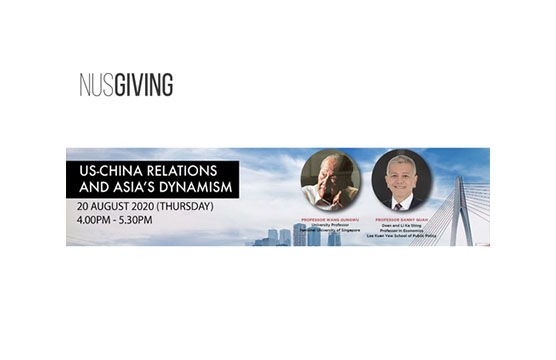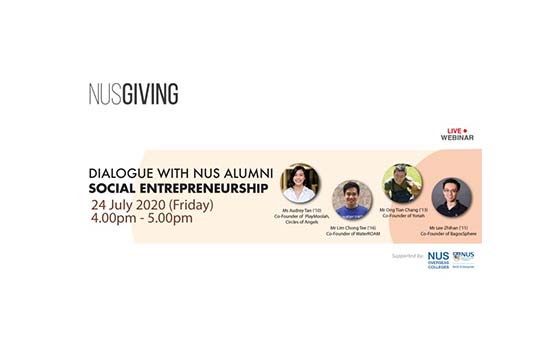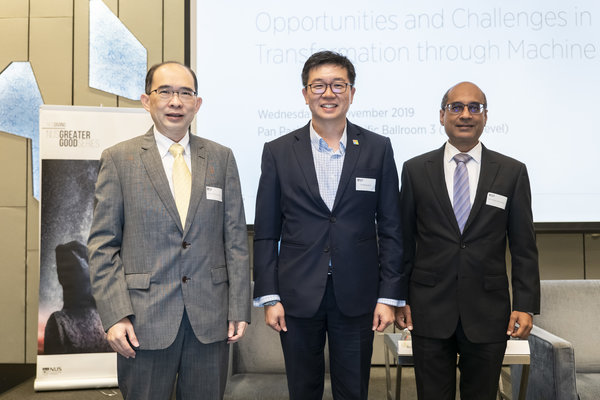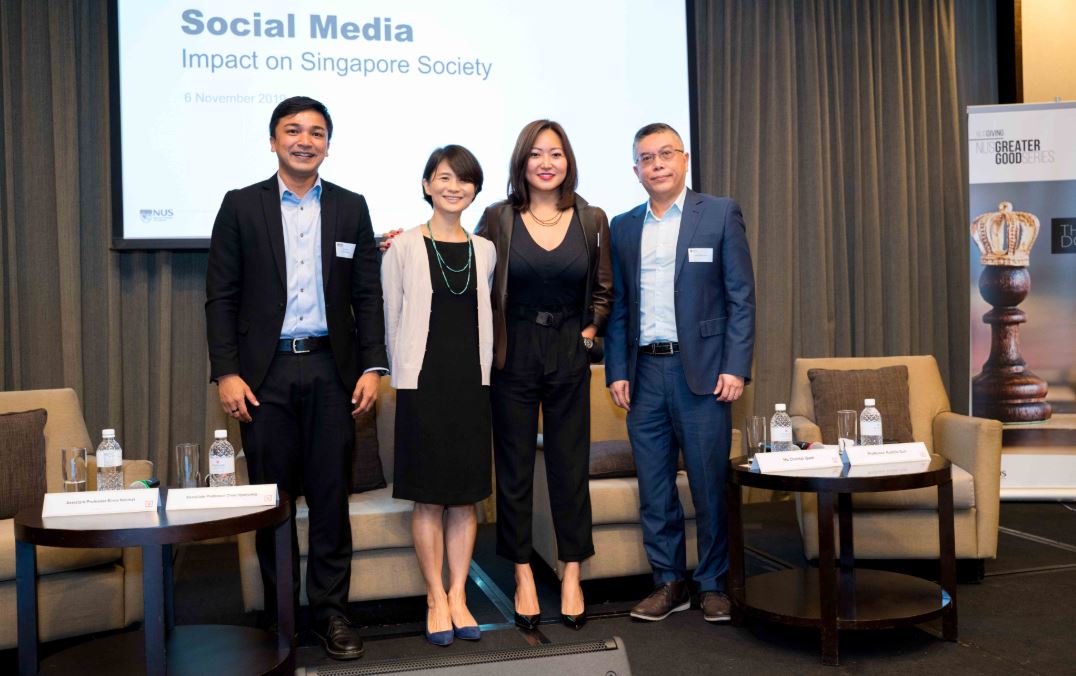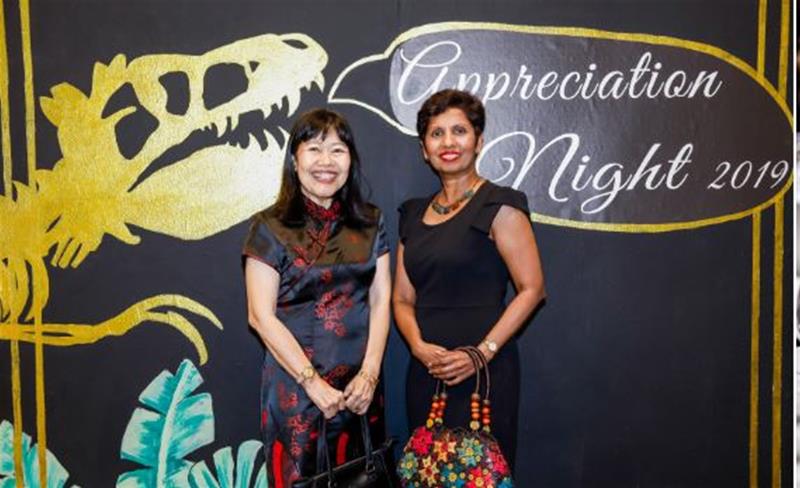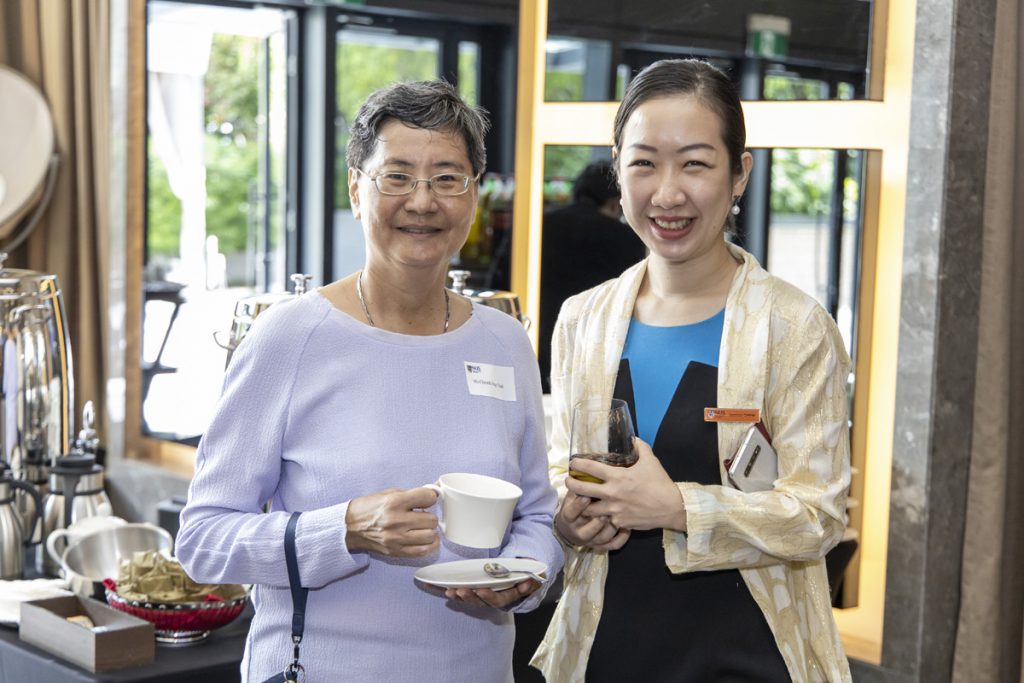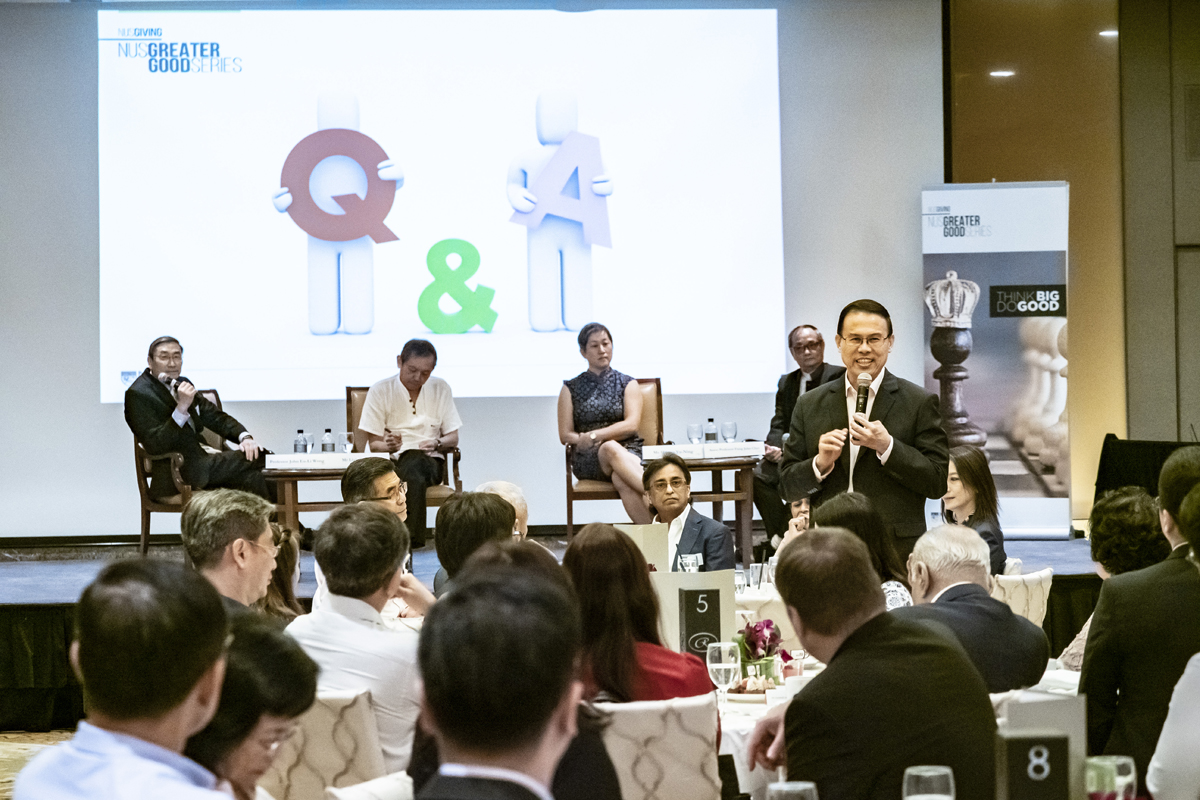Gender Diversity Matters: Women Leadership in STEM
Oct 31, 2022
To celebrate and promote inclusiveness and diversity in the workplace, the NUS Giving Experience Leadership Series spotlighted three female trailblazers in primarily male-dominated disciplines in a specially curated event titled: “Women Leadership in STEM”.
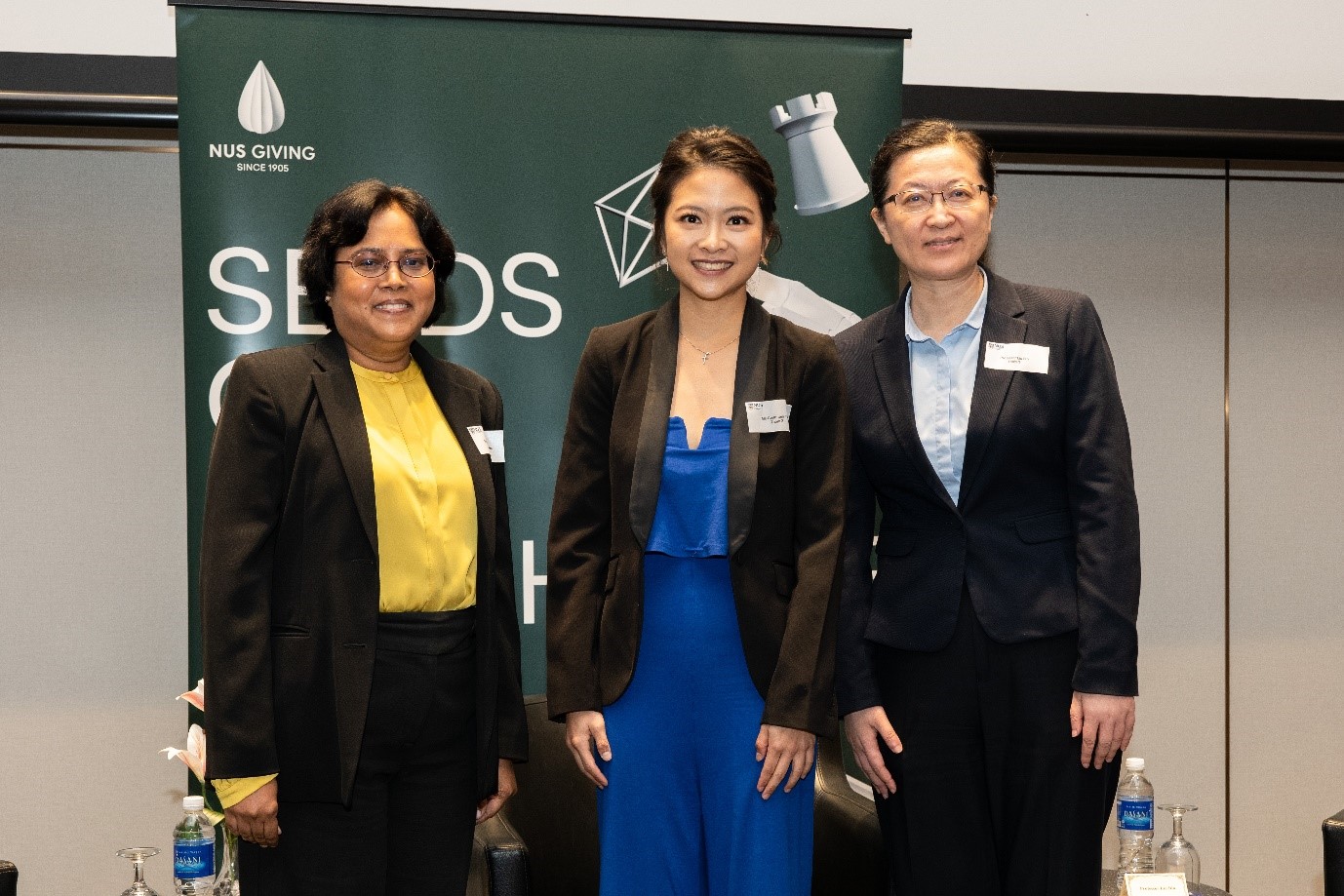
To celebrate and promote inclusiveness and diversity in the workplace, the NUS Giving Experience Leadership Series spotlighted three female trailblazers in primarily male-dominated disciplines in a specially curated event titled: “Women Leadership in STEM”.
In the Science, Technology, Engineering and Mathematics (STEM) disciplines, women account for only 28 percent of engineering graduates and 40 percent of computer science graduates globally.
The event unpacks this phenomenon by exploring the psyche, myths and challenges faced by women in STEM disciplines through the voices and journeys of Prof Liu Bin, Ms Charmain Tan and Ms Guan Dian, co-founder and Vice President (Asia-Pacific) of PatSnap. The panel discussion was moderated by Prof Tulika Mitra.
Why are women leaders underrepresented in STEM?
In response to the lack of women leaders in STEM disciplines, Prof Liu partially attributed the phenomenon to the subtle messages sent out through mass media. “Our younger generation gets the impression that mommy is doing groceries, rather than mommy is a scientist, building a rocket or building a bridge,” she said, highlighting advertisements portraying women in domestic roles rather than excelling in STEM disciplines.
A comment from the audience also noted that social media amplification of gender stereotypes strongly influences the young female psyche, highlighting the need for female role models in STEM industries to alleviate its effects.
Ms Tan agreed and cited from her own experience that a female role model sparked the beginnings of her dive into a leadership role in the technology sector. “My boss was 29 years old… a young, enterprising lady,” she said, referring to the Chief Executive Officer of the medical technology startup she worked for while studying at NUS. “I thought to myself, ‘Wow, if she can do this, so can I.’”
In addition, Prof Liu highlighted the high expectations society has on women to pull their weight in both the household and their careers as one of the reasons many women let their careers take a backseat. She suggested that if there is a supportive environment
in the home for each parent to take their fair share of chores, both would be enabled to strive and achieve success in the workplace.
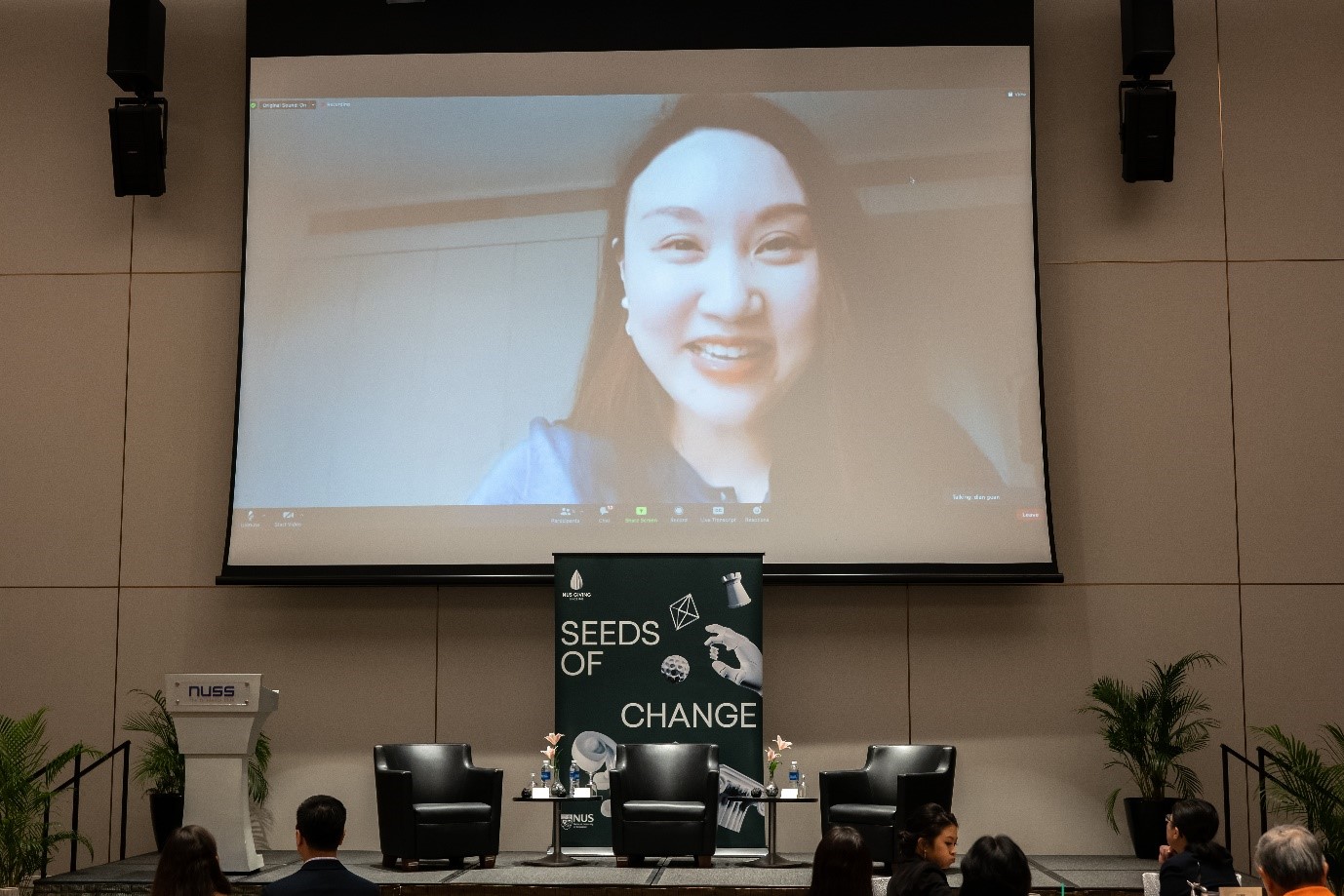
Ms Guan Dian shared her views from Shanghai via a Zoom call.
Is there a gender bias?
Another barrier for women to rise to leadership positions in the STEM disciplines is gender bias.
Ms Guan Dian remembered the challenge of pursuing clients as a young woman in the early days of PatSnap. “It’s quite difficult to gain trust initially because most of the decision makers are seasoned R&D directors and VPs and most of them are middle aged male,” she said as she recounted her early days running the sales, marketing and customer success roles.
However, she noted that as she demonstrated her knowledge and reliability, she gained the trust of her clients and counterparts.
In contrast, Prof Liu highlighted that while she was one of the only few females in the NUS Department of Chemical and Biomolecular Engineering, she had not felt like the “minority” in the environment that she was in. Instead, each person in her department was treated as an equal individual.
She emphasised that the healthy environment of mutual respect in her workplace enabled her to establish a strong working relationship with her colleagues and excel in her research field, resulting in her rising to different positions. She also benefited a lot from her mentors who guided and encouraged her throughout her career.
Why should we support women leaders in STEM?
In a classic battle between the sexes, a cheeky question from a male audience drew laughs from the floor: “I’d like to ask the three distinguished ladies on the panel to share with us some positive attributes that you bring to the job that a man couldn’t have done better than you.”
The guest speakers took the opportunity to highlight how as a woman in a male-dominated workplace, they bring to the table a different set of skills and perspectives as well as sensitivities that benefit the organisation.
“What I bring to the table is potentially a bit more empathy,” responded Ms Tan. “I would think from a user’s standpoint and how they would feel,” referring to her discussions with developers on her company’s software products.
Ms Guan Dian shared that as a woman in a senior management team of high-achieving males, she sometimes plays the role of a facilitator. “In many cases women tend to do a good job in bringing people together to ensure people open up more
and every voice is heard. Sometimes when the discussion gets heated, it’s natural for me to calm people down and bring them back to focus on the issue itself,” she elaborated.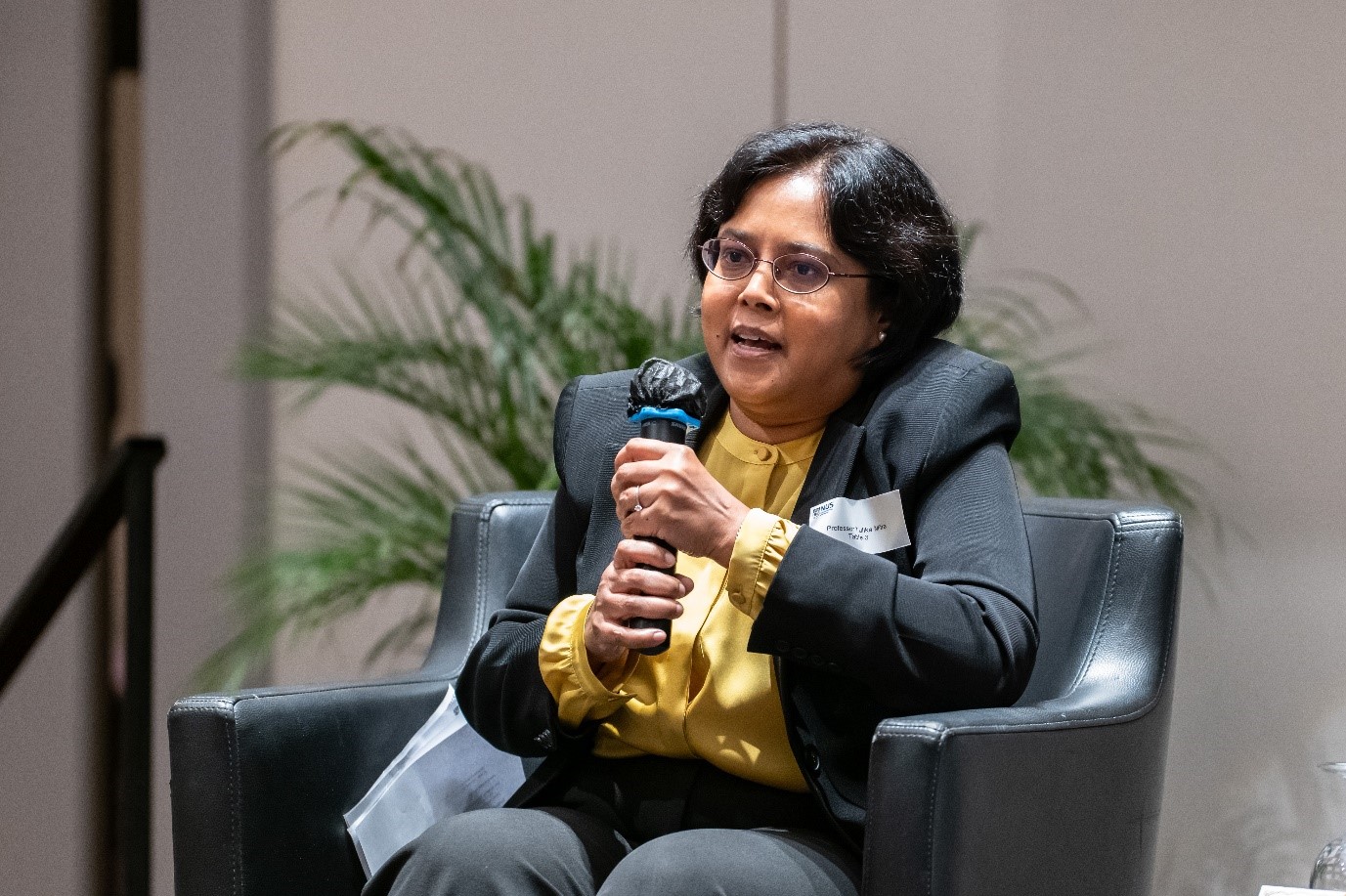
Prof Mitra highlighted that in NUS leadership, there is an equal representation of men and women – out of eight vice provosts, four are women.
Concluding the insightful panel discussion, Prof Mitra highlighted the various initiatives offered by NUS to support women’s progress to leadership positions in the STEM disciplines, such as youth programmes to develop talent, and continuous learning opportunities for women to re-enter the workforce.

